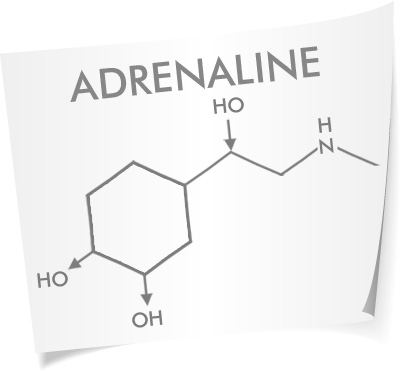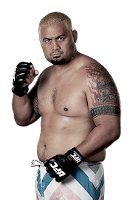Brazilian Jiu-Jitsu is an individual sport. Although there are teams, schools, and associations, at the end of the day your training partners can’t fight for you. At a competition, once you step onto the mat, it’s just you, alone in the spot light.
 Everyone reacts a little bit differently, but for me, as I walk out the gym goes quiet. I feel slightly disconnected from the world, like I am watching my body from the outside. Every sound is muffled and slow. I feel my heartbeat in my ears, and my hands start to sweat. My legs get very tight like overwound springs, ready to explode on command. My throat swells a little bit and I can’t really talk. The muscles in my shoulders and neck get a little twitchy and my arms tingle.
Everyone reacts a little bit differently, but for me, as I walk out the gym goes quiet. I feel slightly disconnected from the world, like I am watching my body from the outside. Every sound is muffled and slow. I feel my heartbeat in my ears, and my hands start to sweat. My legs get very tight like overwound springs, ready to explode on command. My throat swells a little bit and I can’t really talk. The muscles in my shoulders and neck get a little twitchy and my arms tingle.It’s an adrenaline dump, nature’s way of preparing my body for fight or flight. And it can be very difficult to control or deal with. The primal nature of a grappling competition (after all, we are literally getting ready to try and choke someone unconscious) amplifies the bodies’ reaction. My hands are literally twitching a little bit as I type this, just visualizing the moments before a match begins.
Adrenaline is a double edged sword, while it makes us stronger, faster, and more aware, it also impairs our critical thinking and saps our endurance. Its purpose is to give us 60 seconds of superhuman attack strength, or the speed to run and hide. A six minute grappling match is outside the scope of adrenaline’s original design specifications.
I came to BJJ from wrestling. As a wrestling coach, I’ve seen a lot of different reactions to adrenaline dumps, from crying to manic laughter to puking to freezing up, and the classic gassing out 30 seconds into a match. The gassing out was what really started me thinking about what was happening. I knew the kids were in good cardio condition, there was no reason they should be getting tired in 30 seconds. But no matter how many sets of stairs we did, or how intense our drilling was, we still had kids just gas out in competition.
I also saw a lot of mentally tough kids, even at the high school level, just lose it and start bawling their eyes out. What the heck was going on? I don’t have the scientific chops to explain this complicated chemical chain reaction, but I can tell you how I dealt with it as a coach.
The first thing is to help the kids recognize, at an intellectual level that they are going to have some sort of physiological reaction at the moment of competition. Just being aware of that and accepting it will help when the moment arrives. I would talk with them in great detail about what they might feel, and make them understand that it was perfectly normal and that everyone (their competition included) felt something similar. Now, instead of wondering what the heck was going on they could recognize “Oh, this is that adrenaline dump starting” and bring some rationality back to the table.
The next thing we would do is help them recognize that they really aren’t in a life or death situation. Sure, some people get hurt at wrestling or grappling competitions, but it’s rarely serious and almost never fatal. You are most likely going to get up and walk of the mat with no serious injuries. And any kid who spent more than a couple of months in wrestling practice wasn’t going to be afraid of a little pain.
But adrenaline is a fear based reaction, so if we know we aren’t going to die, and we aren’t afraid of physical pain, where exactly is the fear coming from?
The biggest source of fear is from our ego. In wrestling or BJJ there are no excuses for the outcome of a match. There is no team mate who didn’t do his job, no coach who called the wrong play. We can try to blame the referee, but we have the power to take the decision away from a referee by finishing the fight so that is a hollow excuse. We can’t even say our opponent is bigger or stronger or more skilled in a competition with weight classes and skill divisions. With no excuses left, we have to take the full responsibility for the results of a match on our own shoulders. Either we were better than our opponent, or they were better than us. That’s tough medicine to swallow, and our ego fears taking it.
So how do you deal with fear from the ego? First, we need to understand that we don’t really have control over the outcome of a match. We can’t dictate the quality of our opponents. What if our division is full of scrubs and we submit everyone to take home the gold? What does that say about our Jiu-Jitsu? Not much. How about if we go to a tournament and our division is stacked deep with talent, we fight well but get tapped? What does that saw about our Jiu-Jitsu?
We really only have control over our own performance, and that’s how we need to judge ourselves. Did we fight well? Did we perform up to our own level of competence? Did we improve from last time? Once we decide to judge ourselves on these types of criteria, the outcome is secondary. That gives our ego some comfort, and it lessens the adrenaline dump. We aren’t as afraid of losing, so we can relax a little bit and have fun.
Perhaps the best way to deal with adrenaline though is just to compete more often. Just like anything else, as we become used to the environment the fear goes away. While we might still get a little nervous or get some butterflies, we don’t have the huge adrenaline dump to deal with. If you remember your first day in class, you were probably pretty nervous, but now it’s like family. Same guys, same things going on, but no more fear. Tournaments can become the same way; just watch some of the high level guys who compete all the time. It looks like just another day at the office for them.
- Bill Thomas






















































